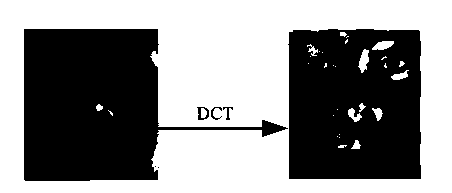Low-rank partitioning sparse representation human face identifying method
A sparse representation and face recognition technology, applied in character and pattern recognition, instruments, computer parts, etc., can solve the problem that face recognition methods cannot effectively deal with face image occlusion, camouflage and illumination changes at the same time
- Summary
- Abstract
- Description
- Claims
- Application Information
AI Technical Summary
Problems solved by technology
Method used
Image
Examples
Embodiment Construction
[0076] Below in conjunction with accompanying drawing, technical scheme of the present invention is described in further detail:
[0077] First select the database to be experimented with, such as the AR face database. The AR database contains 126 subjects and a total of 4000 face pictures. In the experiment, we selected 50 subjects from male pictures, randomly selected 20 from each subject as training pictures to form a training matrix, and the other 6 as test pictures to form a test matrix.
[0078] Decompose the low-rank matrix on the training matrix, and apply the new low-rank algorithm proposed in the present invention to improve the incoherence between classes in the matrix.
[0079] The final objective function of the algorithm is expressed as:
[0080] min A i , E ...
PUM
 Login to View More
Login to View More Abstract
Description
Claims
Application Information
 Login to View More
Login to View More - R&D
- Intellectual Property
- Life Sciences
- Materials
- Tech Scout
- Unparalleled Data Quality
- Higher Quality Content
- 60% Fewer Hallucinations
Browse by: Latest US Patents, China's latest patents, Technical Efficacy Thesaurus, Application Domain, Technology Topic, Popular Technical Reports.
© 2025 PatSnap. All rights reserved.Legal|Privacy policy|Modern Slavery Act Transparency Statement|Sitemap|About US| Contact US: help@patsnap.com



